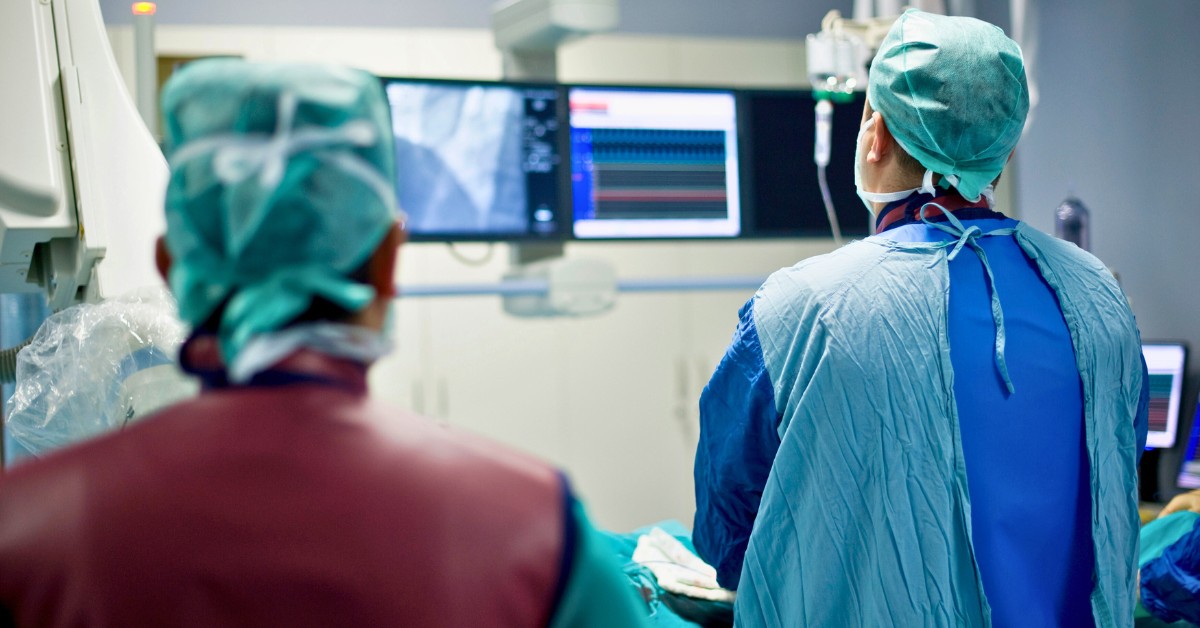
How to Enhance Patient Experiences in the Cath Lab (and Why It Matters So Much)
As clinicians who build careers around their routines in the Cath Lab, it can be easy to forget just how strange and at times overwhelming a visit to the hospital can be for patients and their families. But for many patients, it can be the very first time they are receiving a procedure that they never imagined they’d need.
“A past patient with a complex cardiac history was particularly anxious about their procedure,” said Dr. Nishant Kalra, Regional Chief Medical Officer at VitalSolution. “The cath lab team took extra time to explain each step of the process, addressing the patient’s concerns and ensuring they felt heard and involved. As a result, the patient was visibly more relaxed, which likely contributed to a smoother procedure and better recovery.”
Enhancing patient experiences through an improved focus on patient well-being pays off not only in terms of a calm patient in the lab but also in terms of decreased stress (and accompanying health complications) after a procedure. It can even lead to a holistic change in the patient’s health months or years after a visit to the cath lab.
“Patients have reached out with heartfelt gratitude, sometimes sharing how their positive experience in the cath lab inspired them to make lifestyle changes or seek preventive care,” said Dr. Kalra. “These instances highlight the ripple effect of compassionate care, emphasizing the importance of treating each patient as a whole person, not just a medical case.”
Three Simple Ways to Ensure Great Patient Experiences
Just like any customer service job, good outcomes start in three main areas:
Personal Interactions: Patients are people, let’s not forget. They can be scared, angry, or just confused when entering a procedure area, or even beforehand when discussing their condition with a physician or nurse. Reading body language, and asking patients about their concerns or questions can also open up insights to what patients may have trouble expressing.
An Empathetic Outlook: Your job can be demanding, but a patient in the cath lab, is being bombarded by visual cues that everything they are about to experience is serious and potentially even harmful if something were to go wrong. Having empathy with the patient’s situation can be helpful to calm their nerves and promote a smoother experience for everyone involved.
Respect their privacy by drawing curtains or providing screens so they don’t feel so “on display” in their vulnerable state. Limiting the sometimes overwhelming nature of so much foreign technology in the lab can help patients “take it all in” easier upon entry. In addition, after procedures clear instructions and opportunities for the patient to reach out with questions can help them know that they don’t have to have it all together immediately after a unique experience.
Effective Communication: Being there for not just the patient, but also their family members, and providing insights on what to anticipate can greatly ease a potentially stressful visit to the cath lab. Clinicians should each be able to effectively explain what to expect during the procedure, as well as breaking down complex medical jargon into understandable information is key. Communication can be as simple as introducing yourself first to the patient upon entering the lab and explaining your role in that day’s procedures.
“Unfortunately, I have seen instances where patients had a negative experience due to miscommunication or lack of empathy,” said Dr. Kalra. “For example, a patient might not fully understand their post-procedure plan, leading to anxiety or non-adherence. In such cases, it’s crucial to reassess communication strategies, making sure patients feel heard and understood. This may involve simplifying language, using visual aids, or providing written instructions.”
Examples of Successful Patient (and Staff) Experiences in the Cath Lab
Technology can be a boon to improving patient experiences, especially when facilities work together with clinicians, architects, and technologists, and everyone keeps improving patient care top of mind.
Victor Hall, regional vice president, Cardiac Services, Fairview Clinic, Cleveland Clinic Health Systems, Western Market, spoke to Diagnostic and Interventional Cardiology about Ambient Experience suites when they debuted in 2008. The suites, designed by Philips Healthcare, are fitted with customizable lighting, soothing sounds, rounded walls, and decluttered rooms, offering up a calming atmosphere that the patients themselves get to select. Why? A calm patient is a happy patient.
“One key objective [of the suites] is to relax the patient, which in turn also helps relax the staff and family members,” Hall said. “Any time people are more relaxed, they tend to cooperate and require less intervention such as anesthesia. A cooperative patient is also more likely to get a valuable exam done more quickly and accurately.”
With an improved cath lab setup, it’s not only patients who are calmer and happier in their work, but clinicians as well.
“We have found that not only do our patients find the room a soothing environment, our cardiologists and staff like it as well,” he said. “We have some cardiologists that program or request their preference before a case begins…Plus the doctors tell me that they look at their patients and they can tell from their eyes that they are a lot calmer. And they say in turn, that makes them calm too.”
Positive Interactions in Medical Settings Lead to Less Hospital Time
There are many benefits to improving patient experiences in medical settings. Most importantly, they often lead to a successful outcome for the patient – the overall goal of medical intervention itself. But there are other benefits as well.
Greater adherence to post-procedure plans. Whether it’s a simple post-procedure checklist or an extensive rehabilitation program, patients who have positive experiences in medical facilities tend to “follow the doctor’s orders” more effectively. They also tend to be able to manage their care better, since they understand the importance of their actions on their wellbeing.
Better relationship with medical providers. If you have a great experience with any service industry, you might consider that provider a “friend.” So too are clinicians well regarded when they provide positive experiences.
Hospitals like positive interactions, too! Of course, the business cases for positive patient experiences are many. They include improved “word of mouth” marketing by patients happy with their care, a drop in malpractice risk, a happier medical workforce, and repeat visits between patients and the medical professionals they like working with.
Improving patient experiences should always come back to one simple truth: we want patients to be as well as can be. When everyone pulls in that direction, the goal is easy to achieve.
How to Teach Important Skills to New Team Members in the Cath Lab
A final reminder from Dr. Kalra is that there are simple ways for new or less experienced cath lab team members to improve patient experience and treatment outcomes. It starts by prioritizing empathy and communication.
Here are some tips:
- Actively listen to patients, acknowledging their feelings and concerns.
- Use simple, clear language to explain procedures and plans.
- Encourage patients to ask questions and address them honestly.
- Consider the patient’s perspective and involve them in decision-making.
- Collaborate with the entire care team to create a cohesive, patient-centered approach.
By focusing on these aspects, clinicians can break down barriers and create a more positive environment for both patients and providers.
 company
company 
 (866) 755-7519
(866) 755-7519












